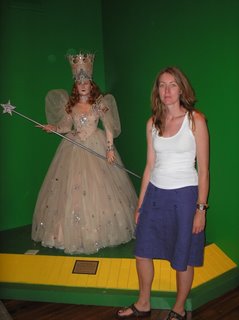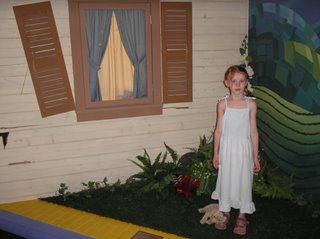Well, we've been in Aguascalientes for two months now and I've finally got it together to start our blog. (thanks MJ)
We (John, Sabine, Lucinda, and Oscar) began our adventure way back on July 15, 2006. We left Toronto on around 11:00 am after packing and repacking our overstuffed van several times. A few hours later we crossed the border at Sarnia and were detained only for about two minutes for a friendly meet and greet with the border guard. Did he notice Oscar (our dog) in the back?
NO! Did he notice our cooler full of food or our van overloaded with our "necessities"?
NO!Our trip through the United States, specifically these states: Michigan, Indiana, Illinois, Missouri, Kansas, Colorado, New Mexico and briefly Texas, was largely uneventful. I hesitate to say it was boring because I think my brain activity was slightly hindered by the 104 + degree Fahernheit temperatures.
Most days our 8-10 hoours on the road were punctuated by a stay at a motel with a pool so we could all frolic and cool off.
The highlight of our trip was a stop at the Oz Museum in Wamego, Kansas. Lucinda says it´s the best museum in the world! (I´ll post some OZ Museum photos and others soon)
In general Lucinda liked Kansas best of all. And she was pretty sad and upset when we left the state and entered Colorado. When we tried to tell her how nice Colorado is she said, "don´t try to improve Colorado to me!"
Once we crossed the border into Mexico on July 22, we drove for 2 more days, mostly through desert, before arriving in Aguas. Our journey took us 9 days and nearly 5000 km (yes, our van made it without any problems).
Thanks to all who helped us survive the trip with your excellant musical selections.
Some favorites were Neil Young´s Living With War, The Doors, Philedelphia Chickens, several versions of
Over the Rainbow, and Johnny Cash´s childrens album.
Here are some signs we saw on our trip through the states:
"Prison area, do not pick up hitchikers"
"Injure and kill a worker, $7500 fine + years in jail"
In a motel, "In effort to keep our towel supply looking its best, we have placed these pieces of stained, but laundry clean toweling here for your use in cleaning guns, fishing equipment, boats, autos, or any others use needed."
Outside a public park in Missouri "Guns or other weapons strictly prohibited"
A word about Oscar: Our pupster was a real trooper on this trip. With his failing hind legs, and sometimes front legs as well, he rarely complained. His persistent woofs from the back, usually around 6:00 every evening, helped to remind us to get on with looking for a motel and stopping for the night.
Oscar lived for another 10 days after our arrival in Aguas, but will always be with us (to quote Lucinda)
Oscar Etobicoke
November 29, 1989 - August 3, 2006
After living in north Aguascalientes for about a month (think Markham, not that there´s anything wrong with Markham), we secured a 2-bedroom apartment in El Encino, one of the oldest neighbourhoods in the city.
Oh and, if you´re trying to find Aguas on a map of Mexico, look in the very centre. It´s to the north and a little west of Mexico City.
Anyway, here are some of the things we love about living in our new place:
*It´s a seven minute walk to the city's main square, a large open public space with a park and fountain on one end and the cathedral on the other.
*There's an 18th century cathedral literally in our backyard whose bells serenade us many times daily. The church is home to the infamous
expanding Christ. His left arm is growing! And when it touches a nearby column, some say a world calamity will occur.
*The
jardin, or church garden with its central fountain, palm trees, and tropical flowers is truly breathtaking. It´s gorgeous by day and stunning at night.
*Great restaurants along our pedestrian-only street, Abasolo, including our "own" little Café con Sentido which happens to be directly below our apartment.
* Our rooftop patio with a view to the jardin as well as downtown. (just last night we had the best seats in the house for the Dia de Independencia fireworks)
Just to briefly summarize what we're up to here. John works long days teaching at Kiosk, a language school mainly for adults, in the north of the city. For those of you who know it, it´s very similar to the
Spanish Centre in Toronto. On weekends he does a couple of street shows in Expo Plaza, near the bullring (which is appropriate). He appears to be the only juggler-unicyclist in town.
Lucinda started school on August 22 at Jean Piaget, a public school also in the north of the city, about a 20 minute drive from our house. She seems to managing ok despite it being extreme spanish immersion.
I take spanish classes, volunteer at Lucinda's school one day a week helping the english teachers, help shuttle Lucinda to a from school, and keep house.
I'll be posting some photos soon of our road trip and some of Aguas as well.
Future posts will include some general info about Aguas. Other topics I plan to write about: cooking with nopal, just what are
churros?, one of the best inventions ever - the lime press, and so on.
 A nopal leaf, trimmed and ready to be chopped for Pico de Gallo
A nopal leaf, trimmed and ready to be chopped for Pico de Gallo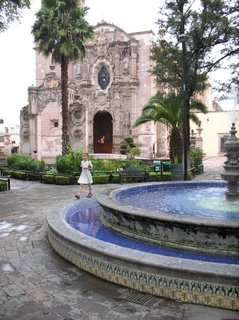
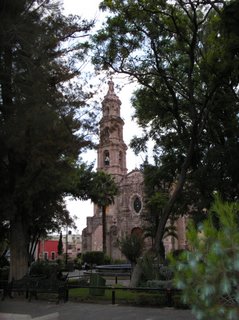
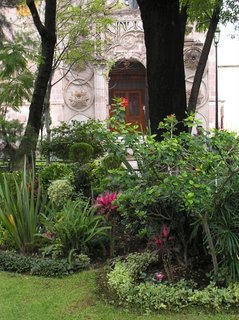
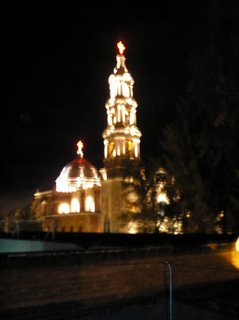
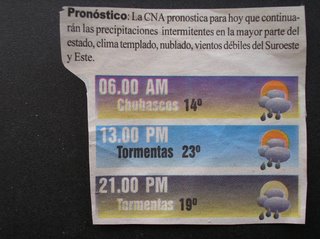
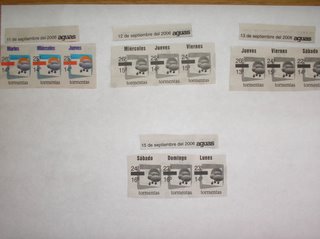
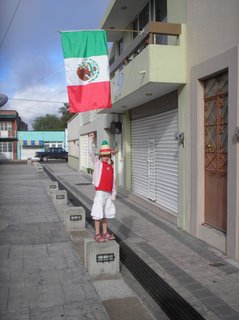
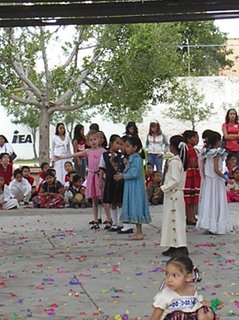
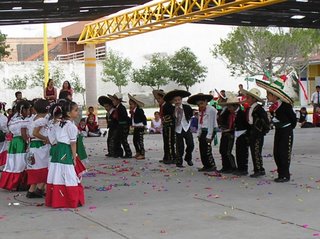
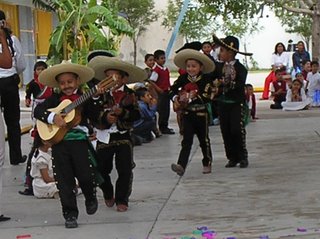
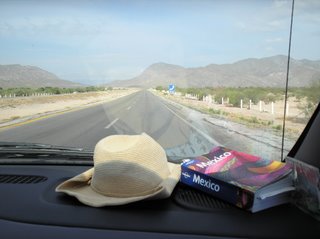
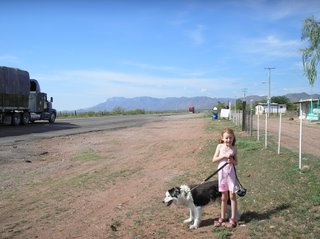
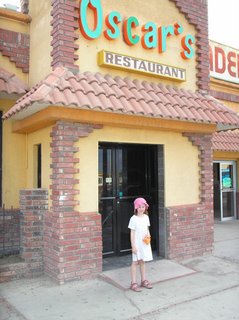
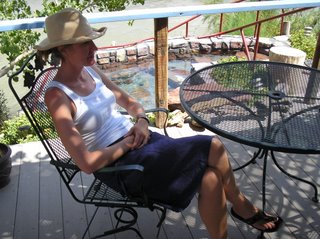
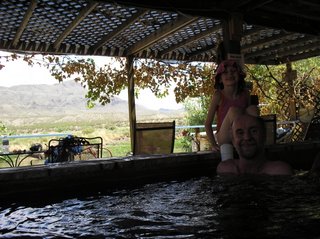
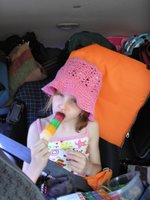
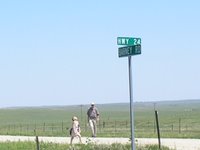 Lucinda in our loaded van
Lucinda in our loaded van